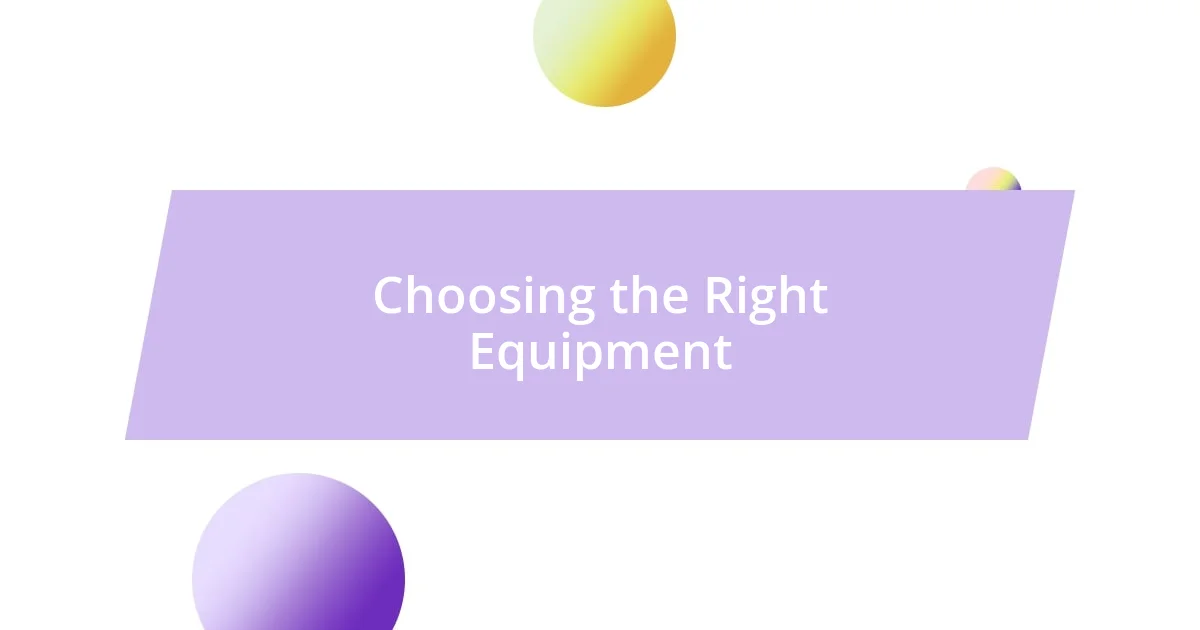Key takeaways:
- Candid photography thrives on capturing spontaneous, genuine moments that reveal true emotions and tell deeper stories compared to posed shots.
- Techniques for successful candid photography include being patient, blending into surroundings, focusing on details, anticipating reactions, and using appropriate equipment.
- Editing enhances storytelling in candid photography; subtle adjustments can evoke emotions while maintaining the authenticity of spontaneous moments.

Understanding Candid Photography Basics
Candid photography is all about capturing the unposed, genuine moments in life. I remember one sunny afternoon sitting in a park, watching families play and friends laugh. It struck me how these unguarded expressions often tell the most profound stories—much more than any posed smile could convey.
When you think of candid photography, consider the element of spontaneity. There’s a unique thrill in being ready to snap a photo at just the right moment. Have you ever caught a friend mid-laugh? That fleeting instant is what makes the image special. I’ve found that the best candid shots are often the ones I didn’t even plan for; they emerge when I’m simply observing the world around me.
Lighting plays a crucial role in candid photography, too. Natural light can create a soft, warm atmosphere that enhances those spontaneous moments. I’ve learned to always stay aware of my surroundings, adjusting my position to make the most of the available light. It’s fascinating how a simple change can elevate a candid shot, highlighting the beauty in its authenticity.

Importance of Natural Moments
Natural moments in candid photography are essential because they reveal authenticity. I remember a winter day at a family reunion where my niece innocently played in the snow. Capturing her genuine giggles amidst the white backdrop made for a photograph that radiated joy. Those unforced expressions resonate with viewers, allowing them to connect emotionally with the moment, evoking feelings that a posed picture often lacks.
I’ve come to realize that spontaneous moments often hold the most significant meaning. Take, for instance, a friend tearing up while telling a heartfelt story—this was the moment I chose to click. The raw emotion on their face told a deeper narrative than anything scripted ever could. It’s in these fleeting seconds that we see the essence of human experience, making those photographs timeless treasures.
In my experience, the context surrounding natural moments enhances their importance. Last summer, while traveling, I captured a couple dancing at a street festival. They were lost in their world, and the vibrant colors of the festival only amplified their joy. It reminded me that these small, real moments often reflect life’s bigger picture, and they deserve to be cherished as the art they truly are.
| Natural Moments | Posed Moments |
|---|---|
| Authentic emotion | Often lacks genuine feeling |
| Spontaneity adds thrill | Predictable and rehearsed |
| Tells a deeper story | Surface-level narrative |

Techniques for Capturing Emotion
Capturing emotion in candid photography demands a keen eye for detail and a deep understanding of human interactions. I recall a moment at a friend’s birthday party when I spotted two old friends catching up after years apart. Their laughter, combined with the surprise in their eyes, painted a beautiful picture of joy that words could never express. Being an observer in such moments allows me to click when those emotions surface, creating images that resonate long after they’re taken.
To enhance your candid photography and effectively capture emotion, consider these techniques:
- Be Patient: Allow moments to unfold naturally without forcing interactions. I often watch for interactions to develop rather than staging them.
- Stay Invisible: Blend into your surroundings to make your subjects feel at ease. I’ve found that the less intrusive I am, the more genuine the emotions become.
- Focus on Details: Pay attention to smaller gestures, like a gentle touch or an expressive glance. These subtle moments often reveal the deeper emotions that define the experience.
- Anticipate Reactions: Knowing your subjects helps; I often predict emotional responses based on their personalities and relationships, making it easier to catch those fleeting moments.
- Use a Longer Lens: This can allow you to capture emotions from a distance without intruding. I’ve found that staying slightly removed can yield more authentic moments.
By embracing spontaneity and honing your observational skills, you’ll find that emotion-filled moments await just around the corner.

Choosing the Right Equipment
Choosing the right equipment is crucial for capturing those spontaneous, heartfelt moments in candid photography. I’ve found that a reliable camera, one that feels comfortable in your hands, makes a significant difference. For instance, while attending a friend’s wedding, I opted for my compact mirrorless camera; its lightweight design allowed me to move freely, snapping genuine smiles and tears throughout the day without drawing attention to myself.
Additionally, the lens you choose matters greatly. A fast prime lens, like a 50mm or 85mm, can beautifully blur the background and draw focus to your subjects. I remember one unforgettable instance at a family picnic when I switched to my 50mm lens. It allowed me to isolate my grandfather’s face as he shared a story, and the background faded away, emphasizing the warmth in his eyes and the sounds of laughter around him.
Don’t underestimate the importance of sound as well. Something as simple as a decent built-in microphone can help capture the ambiance of a bustling market or the soft whispers between friends. I often reflect on how a couple of whispered words can infuse a photograph with life; without good audio equipment, those moments risk being lost forever. So, what equipment do you feel most comfortable with when trying to capture those fleeting but rich experiences?

Composition Tips for Candid Shots
When composing candid shots, consider the rule of thirds. I’ve found that placing your subject off-center often creates a more dynamic image. For example, during a recent beach outing, I captured my kids playing in the waves by positioning them to the right of the frame. This not only added balance but also drew attention to the vast ocean behind them, heightening the sense of adventure.
Light can make or break a candid photograph. I remember a chilly autumn afternoon when I shot my friends laughing under the trees. The golden hour sun filtered through the leaves, creating a warm glow that enhanced the moment beautifully. It’s moments like these that remind me to frequently adjust my angle and spot the light, as it adds layers of depth and emotion to the shot.
Don’t shy away from capturing the background; it tells a story too. I once photographed an intimate dinner party, where the expressions on my friends’ faces were matched by the cozy setting of the softly lit room. By incorporating the details of that delightful space, you invite viewers to step into the scene with the subjects, making the experience more immersive. It’s almost like asking yourself what the viewer should feel—what elements will enhance that connection?

Editing Tips for Candid Photography
Editing candid photographs can significantly enhance the storytelling aspect of your images. I’ve found that subtle adjustments, like increasing contrast, can breathe life into an otherwise flat image. For instance, I once edited a photo of a child jumping into a puddle, and by enhancing the colors and shadows, the joy of that splashing moment came alive. Isn’t it fascinating how a little tweak can evoke such depth?
When it comes to cropping, I’m a firm believer in the motto: less is often more. During a recent trip to a local festival, I took a candid shot of a group of friends sharing a laugh. By cropping out distracting elements from the edges, I was able to focus solely on their expressions, intensifying the emotion. Do you ever find that what you leave out can sometimes tell a more powerful story?
Lastly, I encourage playing around with filters but remember to keep things natural. I experimented with light pastel tones on a series of candid shots from a family reunion, which blended beautifully with the warm afternoon light. The soft hues brought out the nostalgia of the day without overshadowing the candid nature of the moments captured. It’s a delicate balance—how do you ensure your edits complement the spontaneity of your shots?

Developing Your Unique Style
Developing a unique style in candid photography is an exciting journey. I often reflect on my early days with my camera, feeling the thrill of experimenting with angles and perspectives. One unforgettable moment was during a street festival when I dived down low to capture the joy on children’s faces as they chased after a colorful kite. That playful angle not only told a story but also revealed the world from their perspective—showing how a fresh viewpoint can significantly influence the connection with your subjects.
As you cultivate your style, consider what emotions you want to evoke. I remember wandering through a quiet park and seeing a couple sharing a tender moment. Rather than rushing to snap the photo, I took a moment to truly connect with the scene around them, absorbing the atmosphere. This taught me that sometimes, it’s about capturing the essence of the moment rather than just the subject itself. What feelings do you want your images to convey? Answering this can guide your creative choices.
I also believe in the importance of consistency. Through my photography, I’ve developed a knack for using natural light to create ethereal, soft images. During a serene sunset, I captured my partner laughing, the golden hues wrapping around us like a warm embrace. That moment epitomized the light and emotional tone I aim for in my work. As you refine your style, ask yourself: how can you create a signature look that speaks to your vision and resonates with viewers?














